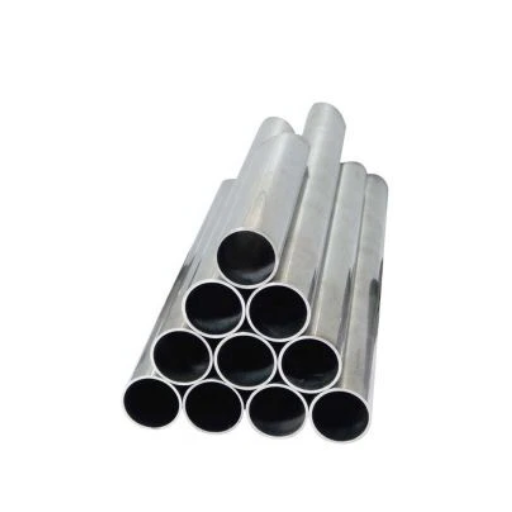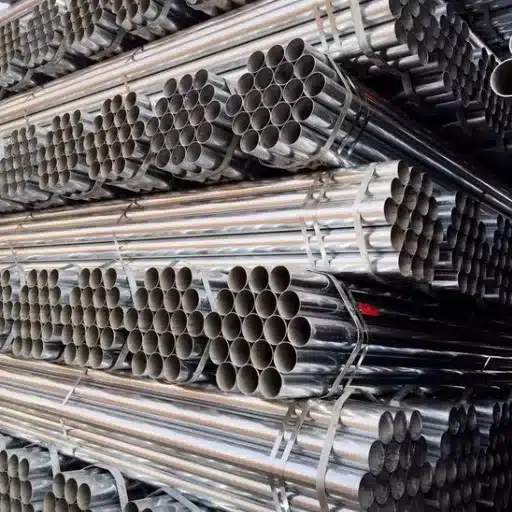Sanitary grade seamless stainless steel pipes are a critical component in industries that demand the highest standards of cleanliness, durability, and performance. From food and beverage processing to pharmaceuticals and biotechnology, these pipes ensure the safe transport of sensitive materials while maintaining strict hygiene protocols. This article will provide a detailed exploration of what makes these pipes unique, their technical specifications, and their critical applications across various sectors. Whether you’re a facilities engineer, a compliance officer, or simply someone looking to understand the intricacies of sanitary piping solutions, this guide will equip you with the foundational knowledge needed to make informed decisions.
What is a Sanitary Grade Seamless Pipe?
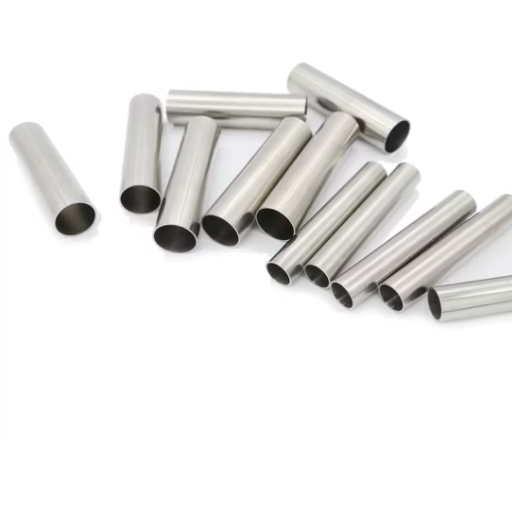
Definition and Characteristics of Sanitary Grade Pipe
To achieve the highest degree of cleanliness and hygiene in the food and beverage sectors, pharmaceutical industries, and biotechnology, sanitary grade seamless pipes are made with a hygienic approach to functionality. As a result, seamless pipes have no weld markings, which helps maintain a smooth internal surface which reduces contaminant adhesion. Parts that require sterility without particle buildup are better off with seamless construction, as there are no hidden grooves which bacteria and other pollutants may gather.
These types of steel are extremely durable while also being heavily corrosion resistant, able to withstand both high pressure and constantly changing temperatures. Moreover, the external surfaces of sanitary pipes undergo polishing and passivation to deliver finishes such as mirror-finish, electro-polishing, or any other methods not covered which make the pipes even more clean while also reducing the chances of bacteria grabbing hold of the surface.
Compliance with specific industry standards and certifications is yet another distinguishing characteristic. This guarantees safety concerning sensitive applications dealing with consumables or biologically active materials. Such sanitary grade seamless pipes help sustain hygienic operations in various industries by seamlessly meeting these stringent requirements.
Why Choose Seamless Pipe for Sanitary Applications?
A sanitary use of a pipe requires minimal risk of contamination, which is best achieved with seamless pipes as they have no joints; therefore, their structure is even. This quality also means the inside surface is smooth, facilitating easy cleaning by preventing material accumulation, decreasing microbial growth potential, and easing maintenance workflows. Furthermore, the absence of welded seams strengthens the pipe, making it more reliable and durable regarding pressure.
Such pipes also meet strict sanitary certifications enabling use in other fields like food and drug manufacturing, and biotechnology. The pipes are compliant to industry regulations so everything is ensured to be safe when these delicate consumable materials are transported. For such precise requirements, many regulators utilize seamless pipes so that hygiene and product quality are preserved.
Seamless pipes are also known to endure harsh temperatures, corrosion, and any mechanical impact one can think of, likely when exposed to them. This tireless, robust design does not compromise hand hygiene; along with tremendous strength and high cleanliness, it safeguards seamless pipes for sanitary applications, reinforcing the preferred choice for such.
Key Standards and Certifications for Sanitary Piping
By sanitation, hygiene, and clean environments, sanitary piping systems undergo specific standards and certifications, which regard bioprocessing equipment; cover design, material, and fabrication requirements. Surface finish, cleanability, and prevention of contamination within the piping system are balanced alongside hygienic practices in pharmaceutical, biotechnology, and food industries. Hence, they receive a high focus.
Likewise, food, beverage, and dairy industry standards have a less widespread as the 3-A Sanitary Standards – but equally important. Protection of the equipment and piping from all sorts of bacterial contamination is a virtue alongside design for easy cleaning. Purity of the product is maintained in processes and transport, guaranteeing the safety of the consumer.
Always needing to contact consumables leads to the requirement of piping made out of materials approved by the FDA. This, alongside avoiding toxic leaching into the product, sets standards that meet the collective need for the guarantees of piping systems in sanitary applications.
How is Stainless Steel Seamless Pipe Manufactured?
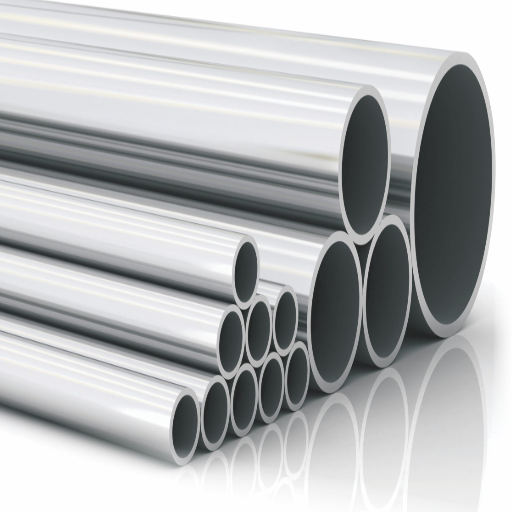
Step-by-Step Manufacturing Process of Seamless Pipe
- Selection of Raw Material: The resolute process starts with assembling the high-grade stainless steel billets or ingots. The stainless steel or other alloys selected must have appropriate mechanical properties, corrosion resistance, and must also withstand long-term service.
- Heating and Piercing: The billet is usually heated to a temperature range of 2200°F to 2450°F (1200°C to 1350°C) so that it becomes malleable. Once it has reached the optimal heating level, it will undergo the piercing process using rotary piercers or piercing rollers that will convert the billet into a hollow cylindrical shape. This step is pivotal in the seamless structure of the pipe.
- Rolling and Elongation: The pipe is further rolled and elongated to obtain the set measurements of thickness and diameter. This can be achieved through the use of a mandrel mill or plug mill process. Both inner and outer surfaces of the pipe undergo processes simultaneously in this stage, which guarantees consistent wall thickness and structural integrity.
- Sizing and Stretch Reducing: For precise measurements of outer diameter tolerances, refining of additional manifesting dimensions and enhancement of mechanical features is done using stretch-reducing mills alongside sizing through reducing mills, yielding visually smooth surfaces.
- Heat Treatment: The pipe undergoes a further pest control process, salt bath nitride treatment, performed during the heating and cooling cycle of the furnace. This step refines the microstructure of the pipe with improvements in ductility, resilience, and excellence in corrosion resistance.
- Straightening Process: The pipeline is sent through a straightening machine to ensure offset pipe segments are in parallel alignment. Particular attention should be paid towards maintaining uniformity, as high tolerances need to be accomplished for sanitary and high-pressure systems.
- Non-Destructive Testing (NDT):Internal and external structures are evaluated with sophisticated methods such as ultrasonic, eddy current testing, and x-ray to discover defects. NDT assesses the seamless pipe’s structural integrity while ensuring the pipe meets strict QA processes.
- Cutting and End Preparation: Pipe segments are cut to desired lengths through hot or cold cutting techniques. The pipes ends are processed based on application needs such as welding which requires bevelled edges or coupling that uses threaded ends.
- Final Inspection and Quality Control:A final inspect determines compliance tosoeamless pipes of conflicting dimensions, ascultamical properties and metallurgy checks against set industry benchmarks, or other certifications. Additional checks done involve visual inspection alongside hydrostatic pressure testing.
- Packing and Shipping: The completed pipes are cleansed and coated to shield them from scratches, then packaged appropriately for transport. Properly identified pipes are traceable and seamlessly packaged for delivery to end-users across various industries.
A seamless pipe of stainless steel serves its purpose where reliability and performance is crucial – in the oil and gas industry, chemical processing, and in the manufacturing of healthcare equipment. All because of the painstaking yet efficient processes established to control every seam.
Differences Between Welded and Seamless Techniques
The main difference between welded and seamless pipes lies in the methods of production and the processes of their manufacturing. To make seamless pipes, a solid steel billet is extruded to form a hollow cylinder that requires no joining or welding. This provides a uniform, seamless structure that is stronger and more durable than its welded counterpart. Welded pipes are made by bending steel plates or strips into a cylinder and then welding them along a spiral or longitudinal seam. Despite the improvements to the technology of welding pipes, the welded seams do create a small weakness in strongly pressurized or extremely high temperature scenarios.
Seamless pipes are the go-to choice for demanding applications within the oil and gas industry or chemical processing due to their superior resistance to pressure, corrosion, and harsh environments. Welded pipes, on the other hand, are cost efficient and adequate for less demanding applications, such as construction and fluid transport systems, where lower pressure tolerances and mechanical strength are acceptable. Industrial analyses suggest that near critical applications where welded pipes are otherwise used, seamless pipes are the unparalleled choice due to their higher pressure rating and longer service life.
Pipes manufactured with specific techniques undergo different levels of rigorous testing to define their dimensional accuracy; seamless pipes are subject to tighter tolerances, while welded pipes, post-weld, are tested for precision through additional operations like heat treatment. This distinction necessitates close consideration of criteria like the operating conditions, requirements of the application, precision needs, and pipe type to ensure appropriate selection tailored for optimal performance.
Role of Alloy and Nickel in Seamless Pipe Production
The production of seamless pipes is provided with alloys and nickel, which are vital for achieving desirable mechanical, thermal, and chemical properties. Additions of alloys like chromium, molybdenum, and vanadium lead to stronger, more corrosion-resistant, and heat-tolerant pipes. Nickel is an important alloy due to its ability to enhance ductility and toughness at high temperatures, which are critical for high-pressure and chemical industry applications.
Nickel, in a concentration of 8 to 20% depending on the grade, improves oxidation and scaling resistance in extreme temeprature or harsh chemical environments. Nickel alloys, specially stainless steel grades, are in high demand because of their high service life and low failure rates during stress. The addition of molybdenum or chromium also adds to the strength in crevice and pitting corrosion that is necessary for offshore and petrochemical pipelines.
Systems that require specific properties within the alloy, like vacuum metallurgy or ladle refining, are used to guarantee that the distribution of alloys within the pipe is homogeneous. Such considerations within the alloys and nickel of the seamless pipes have direct consequences on the operational dependability, life-cycle expenses, and performance vis-à-vis other industrial applications.
Why Use 304 Stainless Steel for Sanitary Applications?
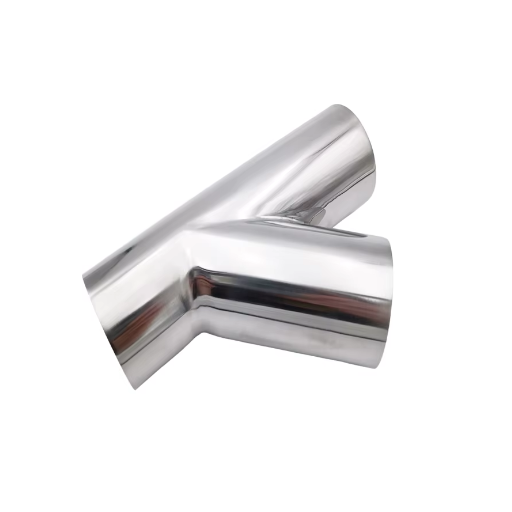
Properties of 304 Stainless Steel
304 stainless steel is known for its unrivaled versatility and widespread use due to its exceptional corrosion resistance, high strength, and prominent formability. As a chromium and nickel alloy, it usually possesses 18-20% chromium content associated with 8-10.5% nickel. This combination makes 304 stainless steel withstand acidic and chloride exposure environments. Its density is about 8.0 g/cm³, along with a tensile strength of 515-750 MPa, depending on the heat treatment and specific processing conditions.
Moreover, 304 stainless steel has a melting point of around 2550°F (1399°C), making it ideal for regions with high temperatures. Coupled with structural stability at cryogenic temperatures, these factors expand its operational capabilities. While being non-magnetic in its annealed condition, 304 may develop slight magnetic properties after cold working. In sanitary and surgical settings, where the absence of particle hiding places within devices is crucial, 304 stainless steel can be polished to a mirror finish, which assists in preventing biofilm formation.
Likewise, 304 stainless steel has outstanding weldability, which enables it to be used in sophisticated fabrication techniques without greatly changing its corrosion-resistant characteristics. The alloy’s hygiene and compliance with rigorous disinfection methods make it suitable for food processing, pharmaceuticals, and the manufacture of medical devices. 304 stainless steel remains the benchmark for sanitary applications all around the world because of its economical and yet remarkable mechanical and chemical attributes.
Benefits of Corrosion Resistance in Sanitary Environments
Sanitary applications require a high level of cleanliness to prevent corrosion of 304 stainless steel and other materials due to their structural integrity. A cross-sectional view of corrosion resistance reveals the surface protection provided via cleanliness that hygiene entails and the prevention of contamination. For instance, food processing plants deal with corrosion. However, the resultant microcrevices have much larger ramifications for public health as bacteria can thrive in these spaces and can completely ruin regulatory compliance.
Chlorine-based cleaners or disinfectants and acidic ones pose a threat, but advanced alloys of iron with other elements maintain structural integrity better than their counterparts. These reduce the frequencies with which maintenance is done and, as a consequence, reduce the costs of operation over extended durations. In addition, their composition has been improved due to newer advances in metallurgical engineering, which boosts their effectiveness in the pharma sterilization or marine-oriented manufacturing’s moist, saline, and phyllic environments.
When mechanically and chemically stressed materials are employed, industries are able to enhance sanitation control materials prolonging the lifespan of critical equipment. Meeting global hygiene benchmarks, these ensure performance that enhances public safety while improving operational efficiency.
Comparing 304 with Other Grades like 316L
|
Property |
304 Stainless Steel |
316L Stainless Steel |
|---|---|---|
|
Corrosion Resistance |
Good |
Superior, especially against chlorides |
|
Molybdenum Content |
None |
Contains molybdenum for better protection |
|
Seamless Pipe Sizes |
Wide range |
Wide range |
|
Cost |
More affordable |
Higher cost due to added alloying |
|
Weldability |
Excellent |
Excellent with reduced carbon content |
|
Strength |
High |
Comparable but stronger with durability |
|
Applications |
General-purpose |
Marine and chemical environments |
The table presents a brief yet detailed comparison of the two stainless steel grades 304 and 316L, focusing on their primary properties and applications. Each grade fulfills particular industrial criteria. However, 316L is more advantageous in hostile environments.
What are the Key Applications of Sanitary Stainless Steel Tubing?
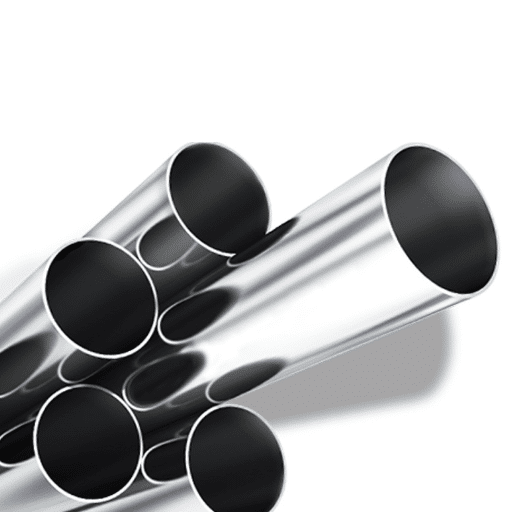
Common Industries Using Food Grade Stainless Steel
Its corrosion resistance and smooth surface make stainless steel crucial in any type of manufacturing industry where hygiene, durability, and corrosion resistance are of utmost importance. Here are some of the industries that use food-grade stainless steel tubes such as:
- Food and Beverage Processing: This industry is concerned with the production and handling of edible products, which involves the use of food-grade stainless steel. It is used for storage tanks, conveyor lines, mixing equipment, and other acidic-resistant facilities such as fruit juice processing units due to its non-corrosive surface.
- Pharmaceutical and Biotech: Strict standard procedures such as бизрres de fabrication (GMP) require advanced levels of cleanliness and sterility, which makes the sector heavily rely on stainless steel tubing for self-cleaning (CIP, Clean-In-Place) and (SIP, Sterilization-In-Place) systems.
- Dairy Industry: The production of dairy goods, such as milk, is one of the most easily contaminated products. Dairy production involves the storage and transfer of these goods and bulk materials. Food-grade stainless steel greatly assists in maintaining sanitation guidelines due to its pitting resistance.
- Brewing and Distilling: The brewing and distilling sectors use stainless steel extensively for fermentation tanks, piping, and bottling equipment. Of its many advantages, stainless steel’s inertness benefits cleaning processes which are is heavily used.
- Cosmetics and Personal Care: As with pharmaceuticals, the processing of cosmetics requires a special environment that has to be kept free from contamination. Stainless steel maintains the integrity of the product during the mixing and storage, and packaging process.
Across all these industries, employing food-grade stainless steel ensures compliance with health and safety regulations while maintaining operational efficiency over time. Its recyclability with his his life makes having an extended life makes him a sustainable modern industry.
Applications in the Food and Beverage Industry
Food-grade steel has an important role in the food and beverage industry thanks to its corrosion-resistant, hygienic, and structural strength. Its uses include processing equipment, storage tanks, and shipping systems. For instance, in dairy operations, stainless steel is utilized in the manufacturing of pasteurizers, homogenizers, and mixing vats, which must adhere to strict health requirements and product health standards. Furthermore, stainless steel silos and vats are used in food processing plants for storage because food processing operations have temperature swings that must be contained to prevent contaminating the food.
That food grade 304 and 316 stainless steel are two of the most used materials for silos and vats because they most commonly endure corrosion from caustic and acidic fluids found in fruit juice, beer and soda manufacturing. Other studies indicate that due to the top-grade polish on stainless steel, biofilm formation is significantly reduced due to the adhesion of microbes on the surface, which helps with international FDA and EU biosecurity standards on food safety.
The food and beverage industry treats stainless steel as an eco-friendly material because it can be recycled. In today’s world, where everyone tries to reduce their carbon emissions, stainless steel is a great choice due to its multiple recyclability. The previously stated qualities not only guarantee safety and product reliability but also result in significant efficiencies and sustainable practices in highly regulated environments.
Use in Pharmaceutical and Bioprocessing
Pharmaceuticals and bioprocessing devices have applications with stainless steel because of its toughness, corrosion resistance, and inertness. Biotechnological processes require high precision sterility in their operations. Therefore, stainless steel serves as an ideal material for bioreactors, fermenters, and mixing vessels. A Good Manufacturing Practices (GMP) compliant company must use stainless steel because of its non-porous surface that is microscopically smooth, thus it can be effectively washed and disinfected.
Grade 316L has a lower life cycle with less expensive pitting and corrosion from saline or chemically stressful environments. Increased surface smoothness from electropolishing further aid avoidance of contamination and active cleaning during cleaning-in-place (CIP) and sterilization-in-place (SIP) ensure lower waiting time and higher operational time for equipment thus still meeting biopharmaceutical production needs.
Industrial research shows stainless-steel biopharmaceutical appliances need little maintenance time without severe risk to equipment lifespan or material properties, while guaranteeing delivery of sophisticated biologic-grade vaccines along with various other sophisticated pharmaceuticals that require stringent purity measures. Coupled with a broad adoption of new processing methods that employ single-use and hybrid systems, the other parts of the steel further fortify its significance in pharmaceuticals and bioprocessing modern workplaces.
How to Maintain and Clean Sanitary Stainless Steel Tubing?
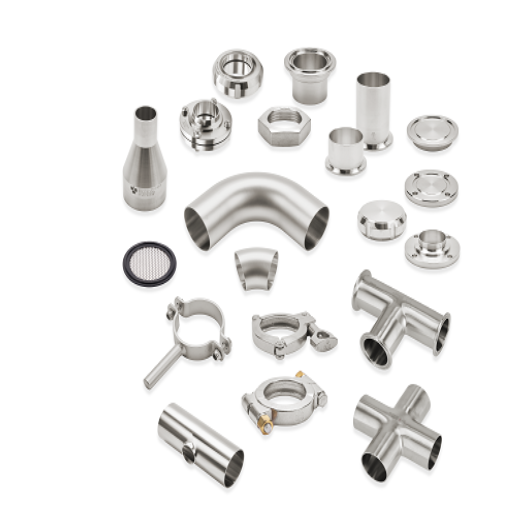
Best Practices for Cleaning Polished Inside and Outside Surfaces
To prevent contamination and maintain the integrity of the surface of sanitary stainless steel tubing, effective cleaning requires following industry standards. Below are some effective practices:
- Appropriate Cleaning Agents: Avoid corrosion and surface degradation when selecting cleaning agents formulated for stainless steel. Organic residues are best cleaned with alkaline detergents, while acidic cleaners handle mineral deposits well. Also, ensure cleanliness with Grade 304 or 316 stainless steel used in sanitary systems.
- Water Quality for Rinsing: Rinse the tubing with high-purity water such as deionized or distilled water to eliminate hard water that encourages the formation of harmful minerals. Use soft water to maintain the polished finish and sanitary conditions.
- Maintain Proper Cleaning Temperatures: Omitting controlled temperatures during cleaning will violate cleaning protocols. Too much heat results in thermally expanded, discolored stainless steel. Too little heat renders the cleaning process ineffective.
- Non-abrasive Cleaning Tools: The surfaces of the tubing are cleaned using soft brushes, microfiber cloths, and non-abrasive pads. Scratching the finish with abrasive materials creates micro crevices and traps contaminants which impede sterilization.
- Routine Inspection and Verification of Cleaning Procedures: Inspect the tubing periodically for residues, scratches, or discoloration that may indicate cleaning shortcomings and equipment wear. Establish cleaning validation measures using TOC (Total Organic Carbon) analysis or microbiological methods to validate the cleanliness of surfaces.
- Long-term Maintenance Through Passivation: Review and passivate the exposed surfaces of stainless-steel equipment regularly to restore and maintain protection against corrosion. This process passivates by removing free iron from the surface, forming a protective layer of chromium oxide which defends against corrosive substances.
These techniques not only maintain the integrity and aesthetic appeal of sanitary stainless-steel tubing but also fulfill the GMP (Good Manufacturing Practices) and FDA regulations. The combination of thorough monitoring processes and routine cleaning greatly minimizes equipment stagnation and the risk of contamination.
Ensuring Longevity and Performance of Stainless Steel Tubing
For preserving the corrosion resistance of the tubing, static passivation is indispensable. This cleaning method is achieved through contaminant removal, iron particle ablation, and formation of a chromium oxide barrier, which greatly increases strength on top of the alloy core. Non-ionic surfactants and surface active compounds that are neutral foaming, pH-balanced wash solutions commonly used in the food and pharmaceutical industries do not cause any abrasive harm to the surface and guarantee a clean work environment.
Material choice is one of the most crucial elements impacting the life cycle of stainless steel tubing. Stainless steel alloys like 304 and 316 grades are deemed the best due to their incredible strength and mechanical features, even in harsh environments. Considering the possible temperature extremes, chemical interactions, and mechanical forces, it is clear why these grades are chosen to withstand such arduous conditions.
While selecting the best-performing alloys, it is of equal importance to consider regular maintenance. Remove contaminants build-up regularly to maintain the inline surfaces’ cleanliness and guarantee the lowest possible pressure drop across the inline filters.
Furthermore, following installation methods like maintaining specified bend radii and achieving a complete weld penetration during assembly helps reduce internal microcracking stresses. Using advanced non-destructive inspection techniques, such as ultrasonic or dye penetrant testing, provides an opportunity for comprehensive defect analysis before integrity is compromised.
Most importantly, regular inspections and pressure tests, and adherence to strict preventive maintenance schedules should not be neglected. Careful engineering, alongside meticulous monitoring, supports the performance and durability of stainless steel tubing.
Handling and Storage Tips for Grade Seamless Steel Pipe
Their performance and quality depend on how the seamless steel pipes are handled and stored. When lifting the pipes, they should be done so with specialized equipment such as nylon slings or padded supports to avoid surface damage. Chains or other sharp-edged tools should be omitted as they can dent or scratch the pipes. Moreover, the secured pipes need to be firm so there is no possibility of shifting during transit, which may lead to collisions or bends.
To control possible corrosion, proper storage space entails that the pipes are clean, dry, and ventilated, free from dust. Racks and supports that are non-abrasive are also effective and recommended since they do not allow contact with the ground, which is prone to moisture or contaminants. It is vital to ensure pipes are properly stacked stably to avoid unnecessary stress on lower layers while compacted. The guaranteed stability gaps need to be filled with spacers for sure surface wear and movement prevention.
Moreover, if pipes are expected to be stored for long periods, they should be wrapped in rust-resistant oil, particularly if they are likely to be exposed to humidity or salt. It is important to monitor the storage area as well as the pipes themselves for any early corrosion damage to ensure timely corrective measures are possible. Failure to observe these practices could compromise the seamless steel pipes, failing key structural and industrial projects.
References
-
Sanitary Stainless Steel Tubing & Piping | Food-Grade – This source discusses durable and corrosion-resistant sanitary tubing and stainless steel pipes, particularly for food, dairy, and beverage processing.
-
Understanding the ASTM A270 Hygienic Tubing Standard – This article explains the ASTM A270 standard, which is a benchmark for hygienic stainless steel tubing, ensuring compliance with stringent industry requirements.
-
Stainless Steel Sanitary Tube – This source provides details on polished sanitary tubes that meet ASTM A270 and 3A sanitary standards, along with related fittings and valves.
Frequently Asked Questions (FAQ)
Q: What is sanitary grade seamless stainless steel pipe?
A: Sanitary grade seamless stainless steel pipe is a type of pipe designed for use in sanitary applications, typically made from high-quality stainless steel materials like austenitic stainless steel. It is often used in industries such as food processing, pharmaceuticals, and biotechnology due to its corrosion resistance and ease of cleaning.
Q: How does seamless stainless steel pipe differ from welded pipe?
A: Seamless stainless steel pipe is manufactured without any welding or joints, providing a uniform structure and strength along its length. This is in contrast to welded pipe, which has a seam that could potentially be a weak point. Seamless pipes are often used in applications requiring high pressure and strength, such as hydraulic systems.
Q: What is the significance of wall thickness in stainless steel pipes?
A: Wall thickness is a critical factor in determining the strength, pressure rating, and durability of stainless steel pipes. Thicker walls can handle higher pressures and are more durable, making them suitable for demanding applications like boiler systems.
Q: What are some common stainless steel grades used in sanitary piping?
A: Common stainless steel grades used in sanitary piping include 304 seamless and 316L stainless steel. These grades are known for their excellent corrosion resistance and are often specified in industries requiring high hygiene standards.
Q: How does duplex stainless steel compare to austenitic stainless steel in pipe applications?
A: Duplex stainless steel offers higher strength and better resistance to stress corrosion cracking compared to austenitic stainless steel. This makes it suitable for more demanding applications, although austenitic stainless steel is more commonly used due to its excellent overall corrosion resistance and formability.
Q: What are stainless steel pipe fittings?
A: Stainless steel pipe fittings are components used to connect, terminate, or change the direction of pipe systems. They are essential for creating a functional piping system and are available in various forms such as elbows, tees, reducers, and couplings, often made by standards.
Q: How does the price of stainless steel pipes vary?
A: The price of stainless steel pipes can vary based on factors such as the grade of stainless steel, wall thickness, pipe seamless versus welded, surface finish, and current market conditions. Duplex stainless steel and polished stainless steel typically command higher prices due to their superior properties.

